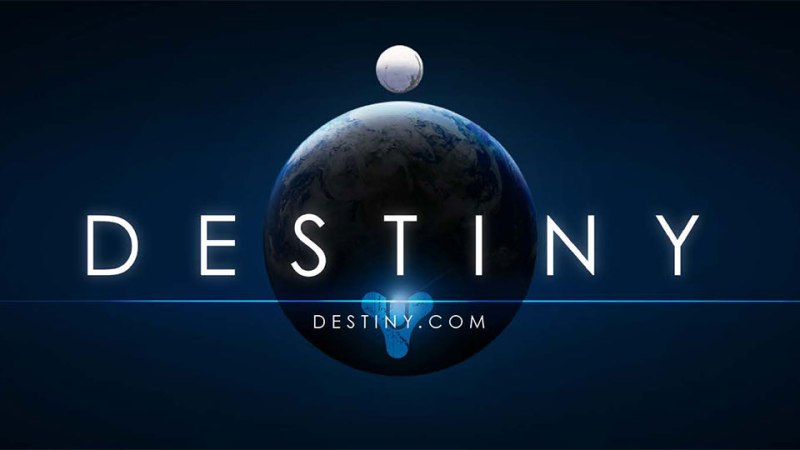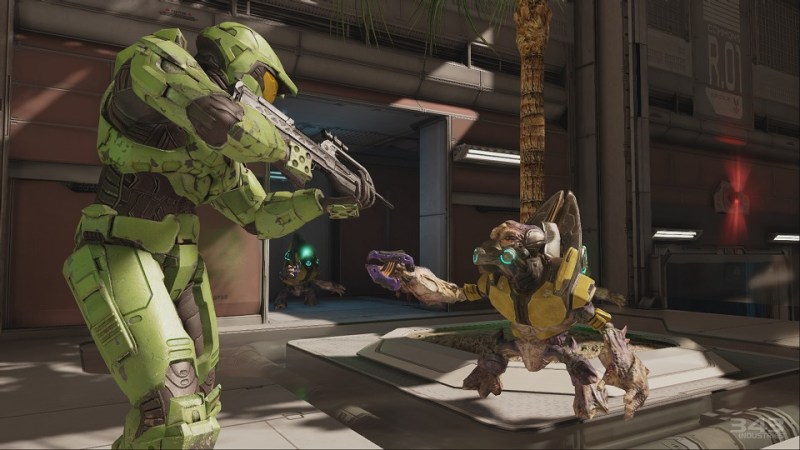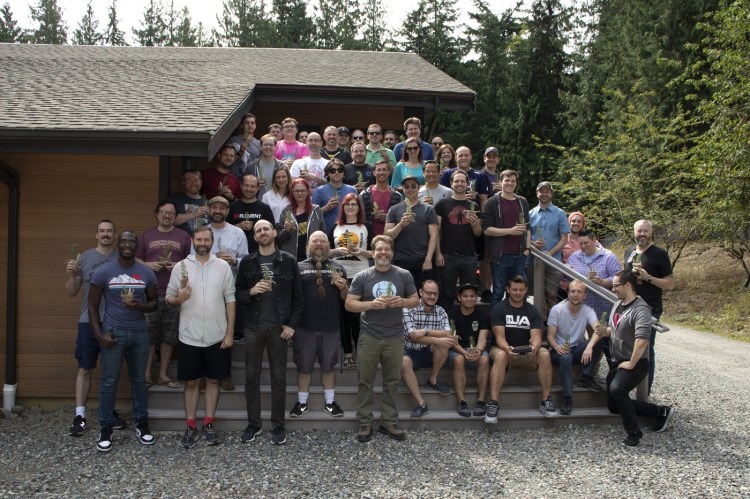GamesBeat: For now, are you concentrated in the Seattle area?
Ryan: Yeah, right now the first two studios are being built in Seattle. That has to do with there being a ton of talent here, and a lot of technology advancement as well. As we learn and grow as a company, as we get better and better at incubating, building, and launching studios, we start first without the added difficulties and challenges that have to do with time zones and having to travel to see people face to face.
At the same time, half the studio or more is in video conference meetings on a regular basis, because we already have global partners. We’re very much working to have our team and all of our processes scalable globally as we develop here in Seattle first.
GamesBeat: Is there anything behind the names? Probably Monsters and Cauldron and Firewalk?
June 5th: The AI Audit in NYC
Join us next week in NYC to engage with top executive leaders, delving into strategies for auditing AI models to ensure fairness, optimal performance, and ethical compliance across diverse organizations. Secure your attendance for this exclusive invite-only event.
Ryan: Probably Monsters was really — we knew we were going to be self-funded for a long time, and we also know we want the teams, once the studios are ready to announce their games, to own them as the developer of their games themselves. But without just saying “no comment” all the time — when people asked, “What kind of games are you going to build?” I’d say, “I can’t really tell you what kind of games, but I can tell you there’s probably going to be monsters in them.”
I’ll typically show up at DICE every year, as well, with a monster game design pitch. I’ll take one or two of the people on the team and bounce an idea of them, but they end up being the crazy owner of it. Sometimes they’re a little too crazy for the team to think about as real products. But I’d have a few people be interested in building them when I showed up with DICE with these game pitches.
It’s a fun name. It talks about what we’re doing. Game development is all about building amazing experiences, harnessing your imagination and turning it into a player experience. There’s a good chance we’ll build a game or two that has monsters in it.

Above: Destiny
GamesBeat: How do you look back now on Destiny, in hindsight? The experience of doing it, the lessons of it?
Ryan: For me personally, Destiny was the biggest team, the biggest game I’d ever had the pleasure of being a part of. Seeing a team scale at that point was a great learning opportunity. It was also — I don’t have the whole metrics of the industry off the top of my head, but it came out at a point where service-based games became — both because of streaming and Twitch and all these things that came with that, it became a situation where you ship the game and evolve it with the fanbase. It pointed out, for all developers, how critical it is, when you have a connected online game, to be ready to evolve with your fanbase, and quickly.
Historically, a lot of my teams have built connected games with strong messaging. That’s really where a lot of the market, a lot of consumers are going for their entertainment. They’re connecting. They’re streaming. They’re talking about it.
The other thing, too, it points to how big the market is getting. It keeps expanding. The more connected people are, the more people there are to participate in entertainment. It drives home that side of iterating with your fanbase, but it also shows — and it certainly has been true since then, and going forward even more so — what maybe used to be niche markets are probably still 8 million or 10 million players. There are real opportunities to build amazing experiences that fit what people are looking for at a whole range of scales.
GamesBeat: It was interesting to see how the live service evolved at a time when that wasn’t happening yet in triple-A games. It was mobile games that were learning and doing a lot of the live operations stuff. A lot of the market has shifted that way now.
Ryan: It was one of the key drivers for making Probably Monsters different, really thinking about how to approach marrying technology and forward-looking business planning with creative evolution. It’s too much to say that the industry needed Probably Monsters, maybe. It certainly needs triple-A studios. I believe there’s a need that Probably Monsters can fill. There’s that real need to evolve and iterate with your audience on a rapid basis with a triple-A game. You have to have a strong technology base, and you have to have a strong business plan for how to fund it and how to move it forward. At the same time, your creative team has to understand that audience and be ready to meet their needs and push forward to being a delightful part of their entertainment experience.
There’s a real opportunity for us to set an amazing trend for our studios, where you can look at a Probably Monsters studio, and their names will be the forward piece when we get there, but what they have behind their amazing creativity is going to be this stable baseline of mature business planning, of already knowing what it feels like to launch a triple-A game and engage with a triple-A audience and evolve. We’ve lived a bunch of that already. We can look on the first day at a team and say, “When you succeed with this audience, this is what they’re going to want on the first day. On the second day they’ll want the next thing.”
You look at gaming over the years, it used to be like, it takes eight hours to finish the campaign. But now, between YouTube and remote driving of PCs and consoles, if someone gets stuck somewhere, they get help. They get through it. The puzzles that made the game experience last a long time might not make it last anymore. So what is that value now, that reward, where they feel like they’re being rewarded for their effort to participate in your game with a truly engaging experience? There are lots of examples of being able to analyze and project and then come back and talk to the teams about how to anticipate and be ready for things you can’t anticipate when you bring your game to market.

Above: Destiny
GamesBeat: I’ve never seen a company like Bungie split itself in two so much, and then wind up coming out of it and going through these wrenching transitions, where half the team might stay behind and half the team might go forward. I wonder how a company, or even an individual, survives that and manages to make it through those transitions. Joining Microsoft, leaving Microsoft, half the team staying on Halo, half the team going to Destiny, and then Destiny going through different versions and eventually leaving Activision — there were so many changes that happened over the years. It always seems to have come out more interesting afterward, but still, it doesn’t sound like it’s a lot of fun when you’re going through that.
Ryan: When I think forward to the future for the Probably Monsters studios, I’m definitely very much working to plan for them to have predictable futures and transitions. A big part of doing that is, one, to give them leadership teams they trust and talk to, so that everyone can be confident that they can communicate proactively throughout the levels of leadership in the company. But also to keep the business planning something that’s efficient and flexible to the point where, if you do have to go through a dynamic transition, you can do it without it being gut-wrenching for the team. It’s the kind of thing where they can feel safe and look forward to it.
That’s a real strength of the Probably Monsters structure overall. When the creative teams are heads-down on their games, the leadership team at the Probably Monsters level can actively be looking out for things that may change drastically in the market, that could affect the team in some way, and communicate that ahead of time, protect for it, and manage the transition to keep it a place where they feel safe.
That’s one reason why I look at wanting to build a long-term, stable career for people inside the studios that Probably Monsters builds. When you’re building games, you want to do a bunch of unexpected, delightful things, but when you’re turning around and thinking about your family and friends and those basic human needs — do you have a roof? Do you have food? Do you have health insurance? Do you have time to be yourself and move your life forward?
All those things are intrinsic to a company respecting the team. It’s very much a core part of where Probably Monsters is positioned to enable our studios, for them to be able to hire people and make plans where they can believe in the stability of the forward-looking plans for their team. Then they can focus on doing amazing things that have never been thought of before and put that into the game experience they build while keeping their lives stable.
I think the game industry in general has that evolution go through. The risk of becoming predictable that people think about is that it means the games will be boring, but I think being able to marry the two, where it doesn’t feel like you always have to be on the edge of having a stable job while you’re doing something amazingly creative — I said before, maybe it’s too much to say on my own that the industry needs Probably Monsters, but I think we’re filling that need of setting these teams up with the possibility, and I think the probability, of having a stable long-term career while doing something at a triple-A scale.

Above: Halo: The Master Chief Collection
GamesBeat: There are some interesting things happening with business models in the industry now. You have subscriptions, and you have the reactions everyone’s having against loot boxes and other aspects of free-to-play. You can look at different examples of where limits are being hit, I think. We had Star Wars Battlefront II, and Anthem’s development as well, a lot of different lessons out there about how things have changed and where gamers are communicating what they want.
Ryan: For me, there are two things we look at for that. One is keeping the conversation going with people who are watching the industry as far as business analysis and marketing and market segmentation planning, but then also looking at the impacts and what that means as far as how people like to participate in a game, how they like to consume it, how they like to pay for it. Keeping the team understanding where they have flexibility or where they have to be ready for a pivot.
The easiest way to sell it to the team is to say, “We have to be building for the future consumer.” We can’t overindex on exactly how things are today, because we aren’t launching today. Even realizing that the business model that they launch may have to evolve really quickly. Depending on how people feel about it, what the regulations are — any of those things could evolve in the market.
So far, our strengths in being efficient with creating IP and building the team and building partnerships that allow us to — we haven’t finished yet, but we’ll hopefully keep our budgets reasonable and keep our market position. If we do have to flex drastically on how we monetize a game, we have a reasonable chance, a real chance of the team being profitable and getting to do it again.
The real lesson there for me, looking at studios in the industry, is making sure we’re in a position where this is a stable, rewarding career for game developers. All the while we’re working to build things that hit the top of the charts, but the most important thing for the team is building something that they’re proud of, and to have a real career in game development.
GamesBeat: Is there anything else you’d like to add?
Ryan: The thing that’s important about Probably Monsters is making sure that people understand we really believe and are working to be something new as we stand up studios and look to mentor and establish them as independent development entities building new IP. I believe the first step there is about culture. It’s about communication.
The one thing that strikes me in that is that a culture of respect and trust — when you talk about things that break with an audience from a monetization point of view, it’s when they don’t feel respected and they don’t feel trusted. But for the teams that stumble, if they’re approachable, if the audience can talk to them and feel like they respond — I think the future consumer — even today’s consumer, but more so the future consumer — is very much like the future game developer. Everyone is coming to an understanding that they deserve to be trusted and respected. They deserve to be heard. To me, that makes a real alignment between company goals and how we work internally, but also how we interact with our fans when we bring our games to market.


